BIOGRAPHY:
Galileo Galilei was the greatest thinker of the Renaissance, the founder of modern mechanics, physics and astronomy, a follower of the ideas of Copernicus, and the predecessor of Newton.
Childhood:

The future scientist was born in Italy, the city of Pisa on February 15, 1564. Father Vincenzo Galilei, who belonged to an impoverished family of aristocrats, played the lute and wrote treatises on music theory. Vincenzo was a member of the Florentine Camerata, whose members sought to revive the ancient Greek tragedy. The result of the activities of musicians, poets and singers was the creation of a new genre of opera at the turn of the 16th-17th centuries. Mother Giulia Ammannati ran a household and raised four children: the eldest Galileo, Virginia, Livia and Michelangelo. The youngest son followed in his father’s footsteps and subsequently became famous as a composer. When Galileo was 8 years old, the family moved to the capital of Tuscany, the city of Florence, where the Medici dynasty flourished, known for its patronage of artists, musicians, poets and scientists.
At an early age, Galileo was sent to school at the Benedictine monastery of Vallombrosa. The boy showed abilities in drawing, learning languages and exact sciences. From his father, Galileo inherited an ear for music and an ability for composition, but the young man was truly attracted only to science.
Studies:
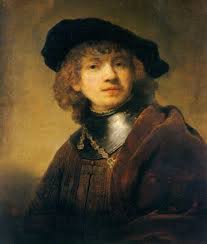
At the age of 17, Galileo went to Pisa to study medicine at the university. The young man, in addition to basic subjects and medical practice, became interested in attending math classes. The young man discovered the world of geometry and algebraic formulas, which influenced Galileo’s worldview. During the three years that the young man studied at the university, he thoroughly studied the works of ancient Greek thinkers and scientists, and also became acquainted with the heliocentric theory of Copernicus.
After his three-year stay at the educational institution, Galileo was forced to return to Florence due to the lack of funds for further studies from his parents. The university management did not make concessions to the talented young man and did not give him the opportunity to complete the course and receive an academic degree. But Galileo already had an influential patron, the Marquis Guidobaldo del Monte, who admired Galileo’s talents in the field of invention. The aristocrat petitioned the Tuscan Duke Ferdinand I de’ Medici for his ward and secured a salary for the young man at the ruler’s court.
University work:

The Marquis del Monte helped the talented scientist get a teaching position at the University of Bologna. In addition to lectures, Galileo conducts fruitful scientific activities. The scientist studies issues of mechanics and mathematics. In 1689, the thinker returned to the University of Pisa for three years, but now as a teacher of mathematics. In 1692, he moved to the Venetian Republic, the city of Padua, for 18 years.
Combining teaching work at a local university with scientific experiments, Galileo publishes the books “On Motion”, “Mechanics”, where he refutes the ideas of Aristotle. During these same years, one of the important events took place – the scientist invents a telescope, which made it possible to observe the life of celestial bodies. The astronomer described the discoveries made by Galileo using a new instrument in his treatise “The Starry Messenger”.
Returning to Florence in 1610, under the care of the Tuscan Duke Cosimo de’ Medici II, Galileo published the work Letters on Sunspots, which was critically received by the Catholic Church. At the beginning of the 17th century, the Inquisition acted on a large scale. And the followers of Copernicus were held in special regard by the zealots of the Christian faith.
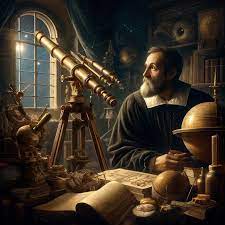
In 1600, Giordano Bruno, who never renounced his own views, was already executed at the stake. Therefore, Catholics considered the works of Galileo Galilei provocative. The scientist himself considered himself an exemplary Catholic and did not see a contradiction between his works and the Christocentric picture of the world. The astronomer and mathematician considered the Bible to be a book promoting the salvation of the soul, and not at all a scientific educational treatise.
In 1611, Galileo went to Rome to demonstrate the telescope to Pope Paul V. The scientist carried out the presentation of the device as correctly as possible and even received the approval of the capital’s astronomers. But the scientist’s request to make a final decision on the issue of the heliocentric system of the world decided his fate in the eyes of the Catholic Church. The papists declared Galileo a heretic, and the indictment process began in 1615. The concept of heliocentrism was officially declared false by the Roman Commission in 1616.
Philosophy:

The main postulate of Galileo’s worldview is the recognition of the objectivity of the world, regardless of human subjective perception. The Universe is eternal and infinite, initiated by a divine first impulse. Nothing in space disappears without a trace, only a change in the form of matter occurs. The material world is based on the mechanical movement of particles, by studying which one can understand the laws of the universe. Therefore, scientific activity must be based on experience and sensory knowledge of the world. Nature, according to Galileo, is the true subject of philosophy, by comprehending which one can get closer to the truth and fundamental principle of all things.
Galileo was an adherent of two methods of natural science – experimental and deductive. Using the first method, the scientist sought to prove hypotheses, the second involved a consistent movement from one experience to another, in order to achieve completeness of knowledge. In his work, the thinker relied primarily on the teachings of Archimedes. While criticizing Aristotle’s views, Galileo did not reject the analytical method used by the ancient philosopher.
Astronomy:
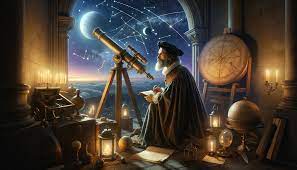
Thanks to the telescope invented in 1609, which was created using a convex lens and a concave eyepiece, Galileo began observing the celestial bodies. But the threefold magnification of the first instrument was not enough for the scientist to carry out full-fledged experiments, and soon the astronomer created a telescope with a 32x magnification of objects.
The first luminary that Galileo studied in detail using the new instrument was the Moon. The scientist discovered many mountains and craters on the surface of the Earth’s satellite. The first discovery confirmed that the Earth is no different in physical properties from other celestial bodies. This was the first refutation of Aristotle’s assertion about the difference between earthly and heavenly natures.
The second major discovery in the field of astronomy concerned the discovery of four satellites of Jupiter, which in the 20th century was confirmed by numerous space photographs. Thus, he refuted the arguments of Copernicus’s opponents that if the Moon revolves around the Earth, then the Earth cannot revolve around the Sun. Galileo, due to the imperfections of the first telescopes, was unable to establish the rotation period of these satellites. The final proof of the rotation of Jupiter’s moons was put forward 70 years later by the astronomer Cassini.
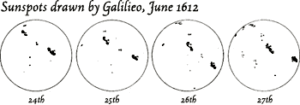
Galileo discovered the presence of sunspots, which he observed for a long time. Having studied the star, Galileo concluded that the Sun rotates around its own axis. Observing Venus and Mercury, the astronomer determined that the orbits of the planets are closer to the Sun than the Earth’s. Galileo discovered the rings of Saturn and even described the planet Neptune, but he was unable to fully advance these discoveries due to imperfect technology. Observing the stars of the Milky Way through a telescope, the scientist became convinced of their immense number.
Experimentally and empirically, Galileo proves that the Earth rotates not only around the Sun, but also around its own axis, which further strengthened the astronomer in the correctness of the Copernican hypothesis. In Rome, after a hospitable reception at the Vatican, Galileo became a member of the Accademia dei Lincei, which was founded by Prince Cesi.
Mechanics:

The basis of the physical process in nature, according to Galileo, is mechanical movement. The scientist viewed the Universe as a complex mechanism consisting of the simplest causes. Therefore, mechanics became the cornerstone of Galileo’s scientific work. Galileo made many discoveries in the field of mechanics itself, and also determined the directions of future discoveries in physics.
The scientist was the first to establish the law of fall and confirm it empirically. Galileo discovered the physical formula for the flight of a body moving at an angle to a horizontal surface. The parabolic motion of a thrown object was important for the calculation of artillery tables.
Galileo formulated the law of inertia, which became the fundamental axiom of mechanics. Another discovery was the substantiation of the principle of relativity for classical mechanics, as well as the calculation of the formula for oscillation of pendulums. Based on this latest research, the first pendulum clock was invented in 1657 by the physicist Huygens.
Galileo was the first to pay attention to the resistance of material, which gave impetus to the development of independent science. The scientist’s reasoning subsequently formed the basis of the laws of physics on the conservation of energy in a gravitational field and the moment of force.
Mathematics:

In his mathematical judgments, Galileo came close to the idea of probability theory. The scientist outlined his own research on this matter in the treatise “Reflections on the Game of Dice,” which was published 76 years after the author’s death. Galileo became the author of the famous mathematical paradox about natural numbers and their squares. Galileo recorded his calculations in his work “Conversations on Two New Sciences.” The developments formed the basis of the theory of sets and their classification.
Conflict with the Church:
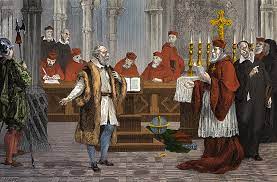
After 1616, a turning point in Galileo’s scientific biography, he was forced into the shadows. The scientist was afraid to express his own ideas explicitly, so the only book Galileo published after Copernicus was declared a heretic was the 1623 work “The Assayer.” After the change of power in the Vatican, Galileo perked up; he believed that the new Pope Urban VIII would be more favorable towards Copernican ideas than his predecessor. But after the appearance in print in 1632 of the polemical treatise “Dialogue on the Two Chief Systems of the World,” the Inquisition again initiated action against the scientist process. The story with the accusation repeated itself, but this time it ended much worse for Galileo.
Personal life:

While living in Padua, young Gallileo met a citizen of the Venetian Republic, Marina Gamba, who became the scientist’s common-law wife. Three children were born into Galileo’s family – son Vincenzo and daughters Virginia and Livia. Since the children were born outside of marriage, the girls subsequently had to become nuns. At the age of 55, Galileo managed to legitimize only his son, so the young man was able to marry and give his father a grandson, who later, like his aunt, became a monk.
After the Inquisition outlawed Galileo, he moved to a villa in Arcetri, which was located not far from the daughters’ monastery. Therefore, quite often Galileo could see his favorite, eldest daughter Virginia, until her death in 1634. The younger Livia did not visit her father due to illness.
Death:

As a result of a short-term imprisonment in 1633, Galileo renounced the idea of heliocentrism and was placed under permanent arrest. The scientist was placed under home protection in the city of Arcetri with restrictions on communication. Galileo stayed in the Tuscan villa until the last days of his life. The genius’s heart stopped on January 8, 1642. At the time of death, two students were next to the scientist – Viviani and Torricelli. During the 30s, it was possible to publish the last works of the thinker – “Dialogues” and “Conversations and Mathematical Proofs Concerning Two New Branches of Science” in Protestant Holland.
After his death, Catholics forbade burying Galileo’s ashes in the crypt of the Basilica of Santa Croce, where the scientist wanted to rest. Justice triumphed in 1737. From now on, Galileo’s tomb is located next to Michelangelo. Another 20 years later, the church rehabilitated the idea of heliocentrism. Galileo had to wait much longer for his acquittal. The error of the Inquisition was only recognized in 1992 by Pope John Paul II.
